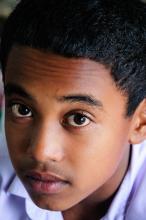challenge

RECENTLY, the U.S. celebrated the 60th anniversary of the landmark Supreme Court case Brown vs. Board of Education that declared unconstitutional state laws establishing separate public schools for black and white students. By winning the Brown case, Thurgood Marshall broke the rock-hard foundation of racial barriers between black and white schools in the U.S.
But the civil right of equal opportunity for equal education never ensured the human right of equal access to it. Thus the explicitly racial divide, reinforced by law, was replaced by a close kin: the poverty divide, reinforced by economic blight entrenched by white flight to the suburbs.
Ten years later President Lyndon B. Johnson took a bulldozer to that new economic divide by declaring, in his January 1964 State of the Union address, an unconditional “War on Poverty.” He said, “Let this session of Congress be known as the session which did more for civil rights than the last hundred sessions combined.” And it did.
EVERY WAR HAS multiple fronts. Johnson’s fight against poverty was a legislative one, which played out in states, cities, and school districts across the country. Within two years Congress had passed the Civil Rights Act, the Food Stamp Act, the Economic Opportunity Act, and the Social Security Act. Each act was a legislative beachhead in the assault against U.S. poverty.
The Elementary and Secondary Education Act of 1965 represented a major shift in the way the U.S. conceived public education. In this act, Johnson took direct aim at the economic infrastructure that barred blacks and other impoverished people from accessing equal education.
LAUGHTER IS Sacred Space: The Not-So-Typical Journey of a Mennonite Actor has the narrative arc of a classic Greek tragedy: Boy from religious sect grows up, becomes a butcher, goes to seminary, then finds acting acclaim as part of a duo (Ted & Lee), only to have his comedic partner die by suicide, after which the show must go on and does.
Ted Swartz’s story is a bittersweet tale, with emphasis on the sweet. It is told in the structure of a five-act play. What originally drew me was the fact that Swartz’s late acting partner, Lee Eshleman, was a classmate of mine at Eastern Mennonite University, where we were art majors to-gether. Eshleman was easily the most talented among us. (His line drawings illustrate the book.) He was also smart, funny, and regal.
After I left EMU, unmarried and pregnant, I would sometimes see Eshleman’s name on the masthead of the alumni magazine and think, “I wish I had it as together as Lee does.” It was a shock to hear that, like my own son, Eshleman too had died by suicide.
His death and its impact on Swartz take up a good deal of space in this memoir. The duo worked together for 20 years, and Swartz is honest about the ups and downs of their friendship. He does a great job of communicating that Eshleman was much more than his suicide or his bipolar disorder. He was that extraordinary person I remember.
SOME BOOKS MAKE you want to sit down with the author on a sunny afternoon for a nice cup of tea. You would be excited to talk about how the book resonated with your own journey. For me, From Willow Creek to Sacred Heart: Rekindling My Love for Catholicism, by Chris Haw, is such a book.
Haw, a young, passionate, and deeply self-reflective theologian, shares his spiritual memoir. Part one recounts Haw's faith journey from a childhood as a lukewarm Catholic to teenage years at the evangelical megachurch Willow Creek, to college—including brief but powerful months in Belize, as well as days of protest against the Iraq war—and eventually to his present life in the apocalyptic landscape of Camden, N.J., where he returned to the Catholic Church.
Part two presents Haw's theological reflections on a variety of questions he has raised along his journey. He also focuses on common objections against the Catholic Church, such as the nature of the Mass as a sacrifice, the church's reliance on human tradition over the Bible, its hierarchical system, alleged ritualism, embellished architecture and ornaments, devastating scandals—including child molestation—and so on. Haw explores such challenging issues thoughtfully and courageously, while humbly accepting that he still struggles with them. Despite it all, Haw longs to see beauty and hope furthered through the Catholic Church.
I am a Catholic convert. I was raised in a Methodist family and trained in Protestant seminaries. By the time I decided to convert to Catholicism, I was starting my first year in the doctoral program of theological studies at Emory University. Feminist theology played a central role in both my theological education and spiritual formation, and it continues to today.